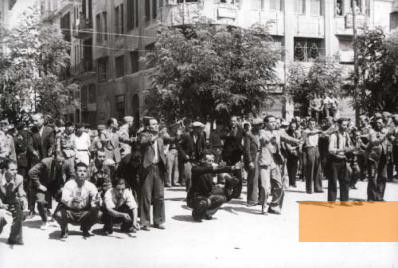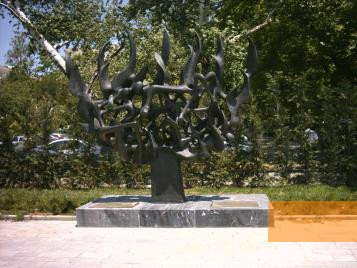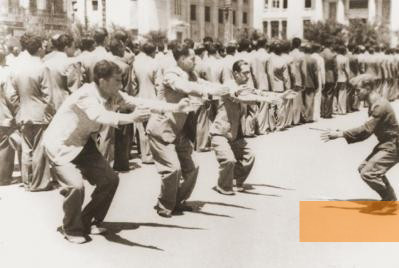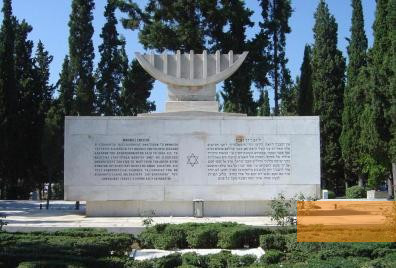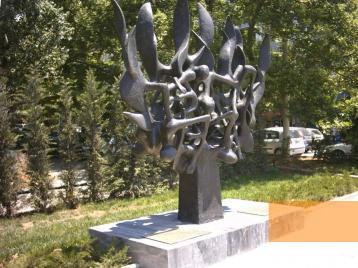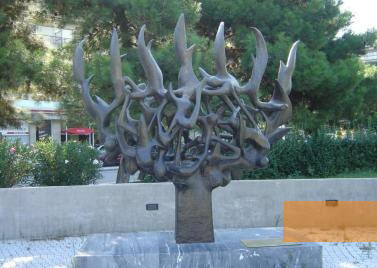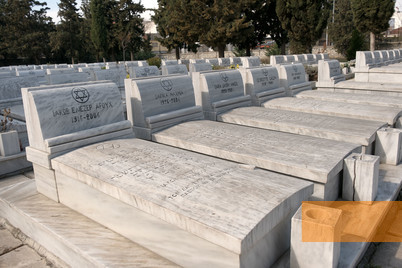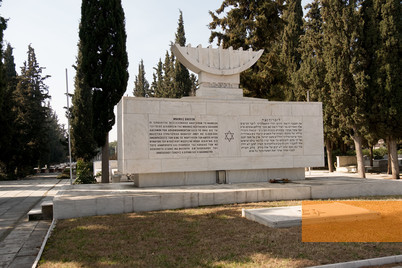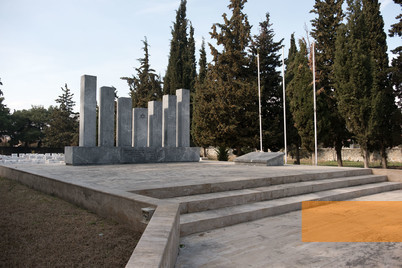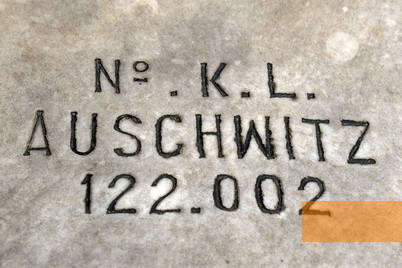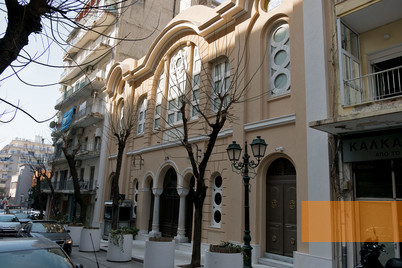Since 1997, a monument in the centre of Thessaloniki commemorates the city's murdered Jews. Only a few hundred members of what was once the largest Jewish community in Greece lived to return home after the deportations to Auschwitz-Birkenau, which took place in a matter of just a few months in 1943.
Thessaloniki is the capital of the Central Macedonia Periphery in northern Greece. Before the Second World War, Thessaloniki was home to about 50,000 Jews – about 70 per cent of Greece's Jewish population. They were for the most part Sephardic Jews, whose ancestors had immigrated to Greece from Spain at the end of the 15th century.
In April 1941, the German Wehrmacht invaded Thessaloniki and the city - the second-largest in Greece - subsequently came under German occupation. Jewish men were deployed as forced labourers and subjected to frequent harassment and abuse by German soldiers. In December 1942, staff members of the Reich Main Security Office came to Thessaloniki in order to begin organising the deportation of the city's Jews. The »Sonderkommando for Jewish Affairs« led by SS Hauptsturmführers Dieter Wisliceny and Alois Brunner was assisted by the local military administration. They made use of the influential position of Zvi Koretz, Thessaloniki's Chief Rabbi, who hoped to appease the Germans by cooperating with them. In the following months, the Germans passed all the increasingly restrictive anti-Jewish decrees on to the Jewish community through him, measures which eventually paved the way for the deportations a few months later. By order of the Sonderkommando, several parts of the city were transformed into ghettos and closed off by the police at the beginning of March 1943. The city's poorer Jews who lived in the Baron Hirsch ghetto were deported two weeks later. Brunner and Wisliceny also had all of the following transports pass through this ghetto due to its vicinity to the train station. The Germans spread information to the Jews through their Chief Rabbi that they were being resettled to a place close to Cracow. Most of the transports, however, were headed to the Auschwitz-Birkenau death camp. The only exception was a transport of privileged Jews, among them Zvi Koretz, who were taken to the Bergen-Belsen concentration camp.
In April 1941, the German Wehrmacht invaded Thessaloniki and the city - the second-largest in Greece - subsequently came under German occupation. Jewish men were deployed as forced labourers and subjected to frequent harassment and abuse by German soldiers. In December 1942, staff members of the Reich Main Security Office came to Thessaloniki in order to begin organising the deportation of the city's Jews. The »Sonderkommando for Jewish Affairs« led by SS Hauptsturmführers Dieter Wisliceny and Alois Brunner was assisted by the local military administration. They made use of the influential position of Zvi Koretz, Thessaloniki's Chief Rabbi, who hoped to appease the Germans by cooperating with them. In the following months, the Germans passed all the increasingly restrictive anti-Jewish decrees on to the Jewish community through him, measures which eventually paved the way for the deportations a few months later. By order of the Sonderkommando, several parts of the city were transformed into ghettos and closed off by the police at the beginning of March 1943. The city's poorer Jews who lived in the Baron Hirsch ghetto were deported two weeks later. Brunner and Wisliceny also had all of the following transports pass through this ghetto due to its vicinity to the train station. The Germans spread information to the Jews through their Chief Rabbi that they were being resettled to a place close to Cracow. Most of the transports, however, were headed to the Auschwitz-Birkenau death camp. The only exception was a transport of privileged Jews, among them Zvi Koretz, who were taken to the Bergen-Belsen concentration camp.
Between March 15 and August 11, 1943, the SS and Wehrmacht deported over 45,000 Jews in 18 trains from Thessaloniki to the Auschwitz-Birkenau extermination camp. The SS murdered nearly 34,000 of them by poison gas immediately upon arrival. About 11,000 Jews from Thessaloniki had to conduct forced labour at the camp. SS doctors abused hundreds of girls from Thessaloniki, subjecting them to experiments involving sterilisation. Over 2,200 Jews from eastern Thrace and from the regions north of Thessaloniki were among those deported. The German occupying forces had registered and established ghettos for them at about the same time as for the Jews of Thessaloniki.
Until the mid-1990s, little attention was paid to the Jewish history of Thessaloniki. There were only a few hundred Jews living in the city. The only monument commemorating those deported had been erected in 1962 on the new Jewish cemetery that was laid out after the war to replace the destroyed old one. In 1996, the municipal administration renamed a public square »Square of the Jewish Martyrs of the Holocaust«. In 1997, the year in which Thessaloniki held the title of European City of Culture, the Greek government set up a central Holocaust memorial on this square. The monument was designed by Jewish sculptor and Holocaust survivor Nandor Glid. He had designed numerous memorials in Europe, among others in Belgrade and for the Dachau Memorial. His Thessaloniki monument, which was completed by his sons following his death, depicts a burning menorah. The monument was very controversial and ended up being frequently vandalised and defaced in the following years. In 2005, the monument was moved to Plateia Eleftherias (Freedom Square), where it can be visited today. On July 11, 1942, the Germans had subjected the Jewish men of Thessaloniki to a degrading registration process on this square, during which they were publicly humiliated in the blazing heat.
In 2001, a Jewish Museum with a small Holocaust exhibition was opened in Thessaloniki.
In 2001, a Jewish Museum with a small Holocaust exhibition was opened in Thessaloniki.
- Name
- Mnimeio Olokaytomatos Ewreon Salonikis
- Phone
- +30 (0)2310 275 701
- Fax
- +30 (0)2310 229 063


